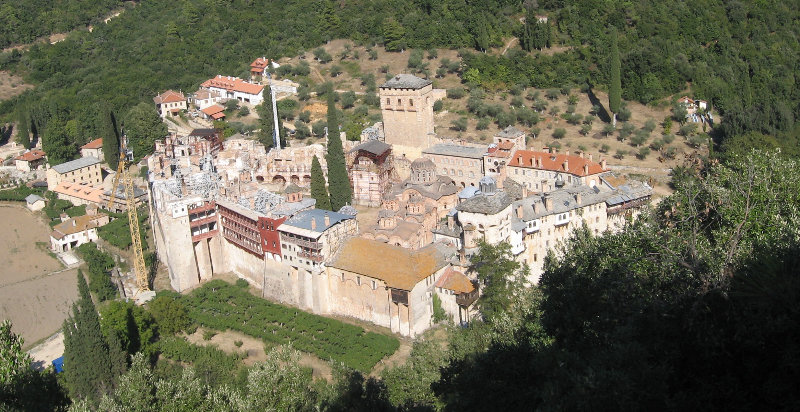Saint John Cassian the Roman was born around 360, probably in Lesser Scythia (in Dacia Pontica). His pious Christian parents gave him an excellent classical education, and also instructed him in the Holy Scriptures and in the spiritual life. Saint John entered a monastery in the diocese of Tomis, where his friend and relative Saint …
Continue reading Saint John Cassian of Dobrogea
Down on the Herăstrău lakeside, right in the middle of Romania’s capital city, the wandering traveller will encounter an authentic Romanian village, rich in monuments and artifacts from the XVIIth century, all the way up to the XXth century, representative constructions originating from important ethnographical regions which have been granted a second life at the …
Continue reading The “Dimitrie Gusti” national village museum – a brief history
Hilandar (fig. 1) is a Serbian imperial lavra in the Holy Mountain. It ranks fourth in the athonite hierarchy. Situated in the North-East part of the Athos Peninsula it is surrounded by hills, and cannot be seen from the coast, although it is only ca. two and a half kilometres far from it. There is …
Continue reading The Monastery of Hilandar and St. Simeon NemanjaSaint Meletius, Archbishop of Antioch, was Bishop of Sebaste in Armenia (ca. 357), and afterwards he was summoned to Antioch by the emperor Constantius to help combat the Arian heresy, and was appointed to that See. St Meletius struggled zealously against the Arian error, but through the intrigues of the heretics he was thrice deposed …
Continue reading St Meletius the Archbishop of AntiochA modern miracle took place in the small Peloponnesian town of Filiatra in 1943, during the dark days of the occupation of Greece by the Germans. This miracle has moved and continues to move, to this day, not only the people of Filiatra but also the people of all Greece.From the German Headquarters in Tripoli, …
Continue reading Miracle of Saint HaralambosThe story of the monastery’s building goes back a long way in remote, yet vivid legends. They have it that a lone priest lived here who had had advised ruler Lapusneanu to build a monastery on the place where a sycamore maple grew. Thus, the legend has it, was the way the first stone was …
Continue reading Slatina Monastery” order_by=”sortorder” order_direction=”ASC” returns=”included” maximum_entity_count=”500″]
Continue reading Epiphany 2017
Why was chosen as the day to day Eminescu National Culture? Is his poetic read more like his lyrics, reached almost all corners of the world, and are current as of his political writings? The universality of his poetic work has been recognized by UNESCO, the poem Star entered into the Guinness Book of Records, …
Continue reading January 15, National Culture Day, marked in Eminescu’s birthdaySaint Theodosius the Great lived during the fifth-sixth centuries, and was the founder of cenobitic monasticism. He was born in Cappadocia of pious parents. Endowed with a splendid voice, he zealously toiled at church reading and singing. Saint Theodosius prayed fervently that the Lord would guide him on the way to salvation. In his early …
Continue reading Saint Theodosius the Great
” order_by=”sortorder” order_direction=”ASC” returns=”included” maximum_entity_count=”500″]
Continue reading 2017 New Years Eve





